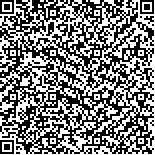| 本文已被:浏览 1697次 下载 1212次 |

码上扫一扫! |
| 中国食用菌出口现状及国内外食用菌中农药残留限量标准对比分析 |
|
张艳梅1,2,李晓贝1,2,鄂恒超1,2,周昌艳1,2,赵晓燕1,2*
|
|
|
| (1.上海市农业科学院 农产品质量标准与检测技术研究所, 上海 201403;2.农业农村部农产品质量安全风险评估实验室(上海), 上海 201403) |
|
| 摘要: |
| 为加快完善食用菌中农药残留标准体系建设,保障国内食用菌安全并促进出口贸易,对2016—2020年中国食用菌出口欧盟、美国、日本、韩国的受阻情况及原因进行梳理,对比分析中国与国际食品法典委员会(CAC)、欧盟、美国、日本、韩国的食用菌农药残留限量标准。结果表明:2016—2020年,中国出口上述贸易国(地区)的食用菌被召回/扣留共计385批次,其中农药残留超标引起的占38%,原因主要是部分农药中国未制定残留限量标准或制定的残留限量标准与上述贸易国(地区)的农药种类和限量值不一致。从出口受阻及标准对比分析中国食用菌农药残留限量标准主要存在以下2个问题:一是中国食用菌农药残留限量标准与实际生产用药不相符。7种登记的农药有效成分只有5种制定了相应的残留限量标准,而制定了残留限量标准的其他63种农药在食用菌上没有登记。2016—2020年,明确标明因为农药残留超标被扣留/召回的食用菌,涉及的农药共35种,中国仅制定了其中10种农药残留限量标准。二是中国制定的残留限量标准的农药种类、限量值与上述贸易国(地区)仍有差距。中国对食用菌已制定残留限量标准的农药有68种,虽然总数上超过CAC和美国且完全覆盖CAC,但是仍然有4种农药美国有残留限量要求而中国并未制定。此外,中国制定的食用菌残留限量标准的农药种类数量远少于欧盟和日本。中国与欧盟相比,并未区分栽培食用菌和野生食用菌,但是欧盟第一次未在食用菌的残留限量标准方面全覆盖中国。中国与上述贸易国(地区)的农药残留限量值也存在差异,部分限量值比上述贸易国(地区)宽松。 |
| 关键词: 食用菌 农药残留限量标准 出口 贸易壁垒 对比 |
| DOI:10.11841/j.issn.1007-4333.2022.04.13 |
| 投稿时间:2021-07-06 |
| 基金项目:上海市科学委员会“科技创新行动计划”技术标准专项(19DZ2203000) |
|
| Current status of Chinese edible fungi trade and comparative analysis of standards of edible fungi pesticide residue limits at home and abroad |
|
ZHANG Yanmei1,2,LI Xiaobei1,2,E Hengchao1,2,ZHOU Changyan1,2,ZHAO Xiaoyan1,2*
|
| (1.Institute for Agri-Food Standards and Testing Technology, Shanghai Academy of Agricultural Sciences, Shanghai 201403, China;2.Laboratory of Quality and Safety Risk Assessment for Agro-Products(Shanghai)of Ministry of Agriculture and Rural Affairs, Shanghai 201403, China) |
| Abstract: |
| To speed up the construction improvement of the pesticide residue standard system for edible fungi, ensure the safety of domestic edible fungi and promote export trade, the situation and reasons for the obstruction of edible fungi exported to the European Union(EU), United States of America(USA), Japan and South Korea from 2016 to 2020 were explored. Comparative analyses on the standards of edible fungi pesticide residue limits in China, Codex Alimentarius Commission(CAC), EU, USA, Japan and Korea were conducted. Because China has not formulated the limit standards of some indicators or inconsistent standards with above-mentioned trading countries(regions), a total of 385 batches of edible fungi exported to the above-mentioned trading countries(regions)was recalled or detained from 2016 to 2020. Among detained or recalled edible fungi, 35% was caused by excessive pesticide residues. The main problems in the standards of edible fungi pesticide residue limit are as follows: 1)The standards of edible fungi pesticide residue limits in China are not consistent with the pesticides in actual production. Among seven kinds of registered pesticides, only five kinds of pesticides have established the standards of residue limits, while the other 63 pesticides established the standards of residue limits have not been registered on edible fungi. A total of 35 pesticides affected international trade according to the data of clear identification of edible fungi detained or recalled due to pesticide residues. Among them, only limits of ten kinds of pesticides have been established in China. 2)There is still a gap between the standards of pesticide residue limits in China and the above-mentioned trading countries(regions). There are 68 pesticides established standards of residue limits for edible fungi in China. Although the total number for standards of pesticide residue limits exceeds those of CAC and USA and even fully covers CAC, there are still four kinds of pesticides that USA has established standards but without standards in China. In addition, compared with the EU and Japan, the number of pesticide residue limit standards in edible fungi is still relatively small. There are no separate standards for cultivated and wild fungi in China compared with EU. EU has not fully covered China in terms of the residue limit standards of edible fungi for the first time. Meanwhile, there are also differences in pesticide residue limit index values among China, CAC, EU, USA, Japan and Korea. Some limit standards are reduced than those of trading countries(region or international organization). |
| Key words: edible fungi standards of pesticide residue limits export trade barriers comparison |